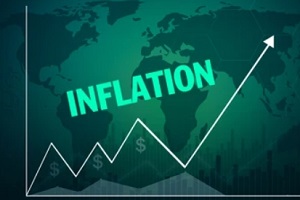 Rising inflation has been a major concern across the U.S. economy the past year, and its effects are being felt strongly in the insurance industry. The impact of inflation is creating major challenges for the commercial insurance market, affecting not only insurers but also policyholders. What will the current economic state mean for insurers moving forward?
Rising inflation has been a major concern across the U.S. economy the past year, and its effects are being felt strongly in the insurance industry. The impact of inflation is creating major challenges for the commercial insurance market, affecting not only insurers but also policyholders. What will the current economic state mean for insurers moving forward?
Inflation In The U.S.
Data from the U.S. Bureau of Labor Statistics shows that the Consumer Price Index (CPI) for all urban consumers rose by 7% in 2021, which is the biggest increase seen across a 12-month period since 1982. In April 2022, inflation climbed 8.3% from a year before, approaching a decades-long record high.
The inflation at the moment largely stems from labor and supply trends spurred by the COVID-19 pandemic.
Labor Shortages
Labor shortages have occurred in nearly every sector in the past year. Almost 90% of businesses were struggling to fill open positions, according to a recent study from the Society for Human Resource Management.
The impact of the pandemic prompted many workers to reassess their employment priorities and place a higher emphasis on having a good work-life balance. It has also made many unemployed people cautious about returning to the workforce, as evidenced by the fact that the proportion of individuals who have been out of work for six months or more has reached its highest point in six decades.
These labor shortages have caused production and project delays for companies and forced some employers to offer higher salaries in hopes of attracting or retaining workers. This has ramped up labor costs overall and is feeding inflation.
Supply
A broad range of supply chain disruptions have occurred since the pandemic began. Many of these problems stem from higher demand for certain items and materials against the backdrop of a slowdown in production and limited availability due to pandemic-related closures.
 However, even as many businesses have now resumed normal operations and increased their production, consumer demand for some materials and goods continues to outpace inventory, due partly to more Americans making big purchases thanks to savings accumulated throughout the pandemic. In response, the costs of many materials and items across industries has risen to offset demand, and this is also contributing to inflation.
However, even as many businesses have now resumed normal operations and increased their production, consumer demand for some materials and goods continues to outpace inventory, due partly to more Americans making big purchases thanks to savings accumulated throughout the pandemic. In response, the costs of many materials and items across industries has risen to offset demand, and this is also contributing to inflation.
The federal government and economists are hopeful that supply chain conditions will improve in the second half of the year and ease inflation concerns. However, the ongoing labor struggles and other enduring impacts from the pandemic are widely expected to keep inflation above pre-pandemic levels through at least next year, which means inflation may continue for quite some time.
Inflation and Insurer Cost
How will this inflation impact insurer cost? In the past, when prolonged inflation was more prevalent in the 1970s and 1980s, the commercial insurance market faced reduced reserve levels, weaker underwriting performance, and unpredictable trends in claims. All of these factors resulted in major losses for insurers as well as coverage challenges for policyholders.
Experts note that the insurance industry today is currently in a better position to sustain losses to reserves than it was in the past. In addition, advancements in financial reporting have provided insurers with a better ability to identify and respond to losses.
The major concern with the current economic environment is the uncertainty surrounding how long current inflation issues will last. These questions have the power to threaten the insurance industry’s reserve levels’ long-term stability as well as underwriting profitability.
Trends In Commercial Property Claims
Within the commercial property insurance market, costs for repairing and rebuilding structures after losses have risen significantly due to higher labor costs associated with construction industry worker shortages. Supply chain issues pertaining to essential building materials are also causing costs to rise, with the National Association of Home Builders reporting that the costs of both steel and lumber have more than doubled throughout the pandemic.
Inflation is also present in the construction sphere in the substantial CPI increases recorded in the last year for structural elements such as window coverings, appliances, construction materials, and floor coverings. These elevated property loss costs may cause poor underwriting review results. This, in turn, may spur a rise in policyholders’ premium expenses, along with additional coverage restrictions. Policyholders might also face underinsurance concerns in bigger property losses.
Trends In Automobile Claims
Another example of the impact of inflation is in the commercial auto insurance market, where vehicle repair expenses are rising and impacting claim costs. Worker shortages within the auto industry are elevating labor costs, while supply chain disruptions for many critical vehicle parts as well as vehicles in general are pushing prices upward. The Bureau of Labor Statistics has noted an increased CPI in the last year for auto parts, used cars and trucks, and motor vehicle repairs.
 At the same time, the frequency and severity of accidents have risen in recent years, with increased crash rates and higher medical treatment expenses being noted. These higher loss costs could result in lower profits for auto insurers, which may prompt them to raise premiums and restrict policyholders’ coverage offerings.
At the same time, the frequency and severity of accidents have risen in recent years, with increased crash rates and higher medical treatment expenses being noted. These higher loss costs could result in lower profits for auto insurers, which may prompt them to raise premiums and restrict policyholders’ coverage offerings.
Although inflation is currently having the biggest impact on the auto and property insurance markets, prolonged inflation is expected to start affecting other segments as well, such as liability insurance and workers’ compensation insurance. As a result, insurers could struggle to maintain insurance pricing in the face of more volatile trends.
In response, insurers might be forced to continue raising overall premiums and making other adjustments to coverage to prevent unanticipated loss costs.
How Inflation Is Affecting Group Health Insurance
Another effect of soaring inflation is a rise in group health insurance costs. Healthcare facilities are paying more money for their supplies and utilities, not to mention employee costs. This means patients and insurers need to be charged more for services to offset these growing expenses.
The costs of physicians’ and hospital services were already on the rise in 2021, and that trend seems likely to continue. The burden of these costs will be shouldered by employers and employees alike, and many employers are trying to find ways to control costs. For example, workplace wellness programs and reference-based pricing are helping some employers to better manage their healthcare spending.
Impact Of Catastrophes On Claim Costs — Demand Surge
Another factor to consider is demand surge, which is the increase in rebuilding costs resulting from the magnitude of a natural disaster compared to normal times. The general benchmark for demand surge is an increase in cost of 20% to 30% after a disaster, although estimates can vary depending on the event, materials, and location.
One of the most basic drivers of demand surge is the number of property repairs or full rebuild needed in a certain area after a major disaster. Some events may cause broad damage across a vast geographical area, resulting in a large number of filed claims, while others are more severe and lead to costlier and more complex claims.
It is important to note that natural catastrophes can strain infrastructure significantly, obstructing the supply chain that is needed for bringing materials to the impacted area and pushing prices upward. Labor prices can also rise due to a lack of providers and contractor shortages. At the same time, catastrophes put strains on insurance claims’ staff and can result in a shortage of claims adjusters.
Insurers have found ways to address the potential impacts of demand surge, but many of them are vulnerable to the effects of the current pandemic-related inflationary environment.
How Employers Are Coping
 The strong possibility of rising premium costs in response to ongoing inflation, along with underinsurance and coverage restrictions concerns, mean that employers are having policy renewal conversations early. Many are working with their insurance advisors to discuss coverage renewals in advance so they have ample time to prepare for any potential policy changes, especially when it comes to pricing. Some are holding quarterly meetings with insurance professionals to stay on top of the evolving inflation landscape.
The strong possibility of rising premium costs in response to ongoing inflation, along with underinsurance and coverage restrictions concerns, mean that employers are having policy renewal conversations early. Many are working with their insurance advisors to discuss coverage renewals in advance so they have ample time to prepare for any potential policy changes, especially when it comes to pricing. Some are holding quarterly meetings with insurance professionals to stay on top of the evolving inflation landscape.
Many employers are also reviewing the terms and conditions of their coverage, paying particular attention to exclusions and whether or not their policy limits are adequate. They are also ensuring they have effective risk management measures to reduce or prevent potential claims.
How New City Can Help
To learn more about how the current economic climate is affecting insurance for businesses, reach out to the commercial insurance and benefits consulting professionals at New City.
